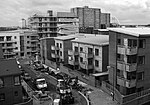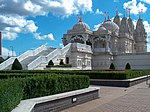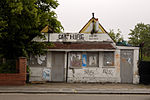London Welsh School
The London Welsh School (Ysgol Gymraeg Llundain) is a Welsh medium primary school in London, England. The Welsh language is the language of instruction for all classes and activities. The London Welsh School's origins date back to language classes taught in 1955, and a dedicated school set up some two years later. Its official name is The Welsh School, London. For much of its history the school was the only Welsh medium institution located outside Wales until the opening of a Welsh language school in Patagonia, Argentina. That institution, the Ysgol yr Hendre, was opened on 6 March 2006 in Trelew to serve the Welsh-Argentine community.In 2000 the London Welsh School was forced to leave its host since 1961, the Welsh Chapel in Willesden Green. Cardiff North MP Julie Morgan appealed for government funding for the school, but was rejected on the grounds that it did not teach the National Curriculum for England, Wales and Northern Ireland. The school later found a permanent home in the annex of a Brent primary school.In 2015 the school relocated to Hanwell Community Centre in Hanwell, London borough of Ealing.
Excerpt from the Wikipedia article London Welsh School (License: CC BY-SA 3.0, Authors).London Welsh School
Shakespeare Avenue, London Harlesden (London Borough of Brent)
Geographical coordinates (GPS) Address Phone number Website Nearby Places Show on map
Geographical coordinates (GPS)
| Latitude | Longitude |
|---|---|
| N 51.5407 ° | E -0.2638 ° |
Address
The Stonebridge School
Shakespeare Avenue
NW10 8NG London, Harlesden (London Borough of Brent)
England, United Kingdom
Open on Google Maps









